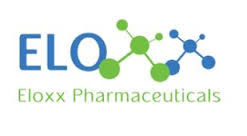Over the last two decades, a growing number of scientific evidences highlighted the potential therapeutic value of several structures of aminoglycoside antibiotics (including gentamicin and G418) for the treatment of various genetic diseases caused by nonsense mutations. These findings resulted in a fast evolvement of synthetic derivatives of aminoglycosides which were shown to be more target specific and less toxic than the clinically used antibiotics. The emerging progress in drug design and development has necessitated the urge to develop a fast, easy and accurate procedure for the determination of these potential therapeutic agents in various biologically derived matrices. Here we describe the preparation of a generic polyclonal antibody that was used for the development of homologous and heterologous immunoassays for the detection of a wide range of natural and synthetic aminoglycoside derivatives, highlighted today as potential therapeutic agents for the treatment of various genetic diseases. A common two-ring scaffold, NB82, present in the majority of compounds exhibiting potent biological activity, was used as a generic immunization hapten for the immunization of two rabbits. By using a series of chemical steps, NB82 was selectively conjugated via the N-1 position through glutaric acid linker to a carrier protein. Sensitivity (I₅₀) values for the recognition of three representative compounds NB82, NB84 and NB124 were determined to be 10 ± 3 ng mL⁻¹, 0.5 ± 0.04 μg mL⁻¹ and 1 ± 0.12 μg mL⁻¹, respectively. Limits of detection were determined to be 1 ± 0.3 ng mL⁻¹ for NB82, 20 ± 7 ng mL⁻¹ for NB84 and 15 ± 8 ng mL⁻¹ for NB124. The developed assays were further exploited for the in vivo monitoring of the therapeutic compounds in mice serum. Serum experimentations exhibited similar detection limits as observed for the PBS calibration experiments, demonstrating no interference with assays sensitivity, with rather high recovery ratios ranging from 92 to 107% in whole blood samples.







